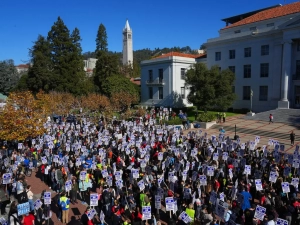When George Orwell wrote his classic novel 1984, few people could envision the idea of Big Brother watching over them every minute of the day. Well now, the Big Brother moment has arrived in many workplaces and is rapidly expanding.
An astounding piece in the NY Times, 8/14 (8/15 in the print edition), details the mushrooming growth of the “spying on workers” industry that installs apps in computers used by them to monitor their “work periods” and “idle periods” at their computers.
“In lower paying jobs,” the Times writes, “the monitoring has become ubiquitous:” not just at Amazon, where the second-by-second measurements became notorious, but also for Kroger cashiers, UPS drivers and millions of others. But the practice has also spread to professional and white-collar jobs that require advanced degrees where workers are subject to being “tracked” and “pauses can lead to penalties, from lost pay to lost jobs,” with “electronic surveillance over every minute of their workday.” The relentless tracking has robbed them of any semblance of workplace dignity that many have described as “demoralizing,” “humiliating” and “toxic,” with some saying “they don’t even have enough time to use the bathroom.”
In many cases, the system prevented them from doing the job they should be doing, Social workers, for example, at UnitedHealth, a company that uses the system, complain that much of their time is spent on counseling patients which counts as “idle periods” because it is not spent at their computer keyboards. Grocery cashiers complain that monitoring the rate at which they scan items often prevents them from spending a little more time with older folks who are slower at checkout stations, causing tension between workers and customers. Many say that even if these situations are taken into account by electronic systems, they are often wrong because they are “inept at capturing offline activity, unreliable at assessing hard-to-quantify tasks and prone to undermining the work itself.” In some instances, workers have been monitored for signs of union activity.
The system has also given rise to apps that are advertised to beat the system, such as a “mouse jiggler” that create the appearance of computer activity. One professional employee said, “You have to be in front of your computer, in work mode, 55 or 60 hours just to get those 40 hours counted and paid for.”
The system conjured up by Orwell was also satirized by Charlie Chaplin in his classic film Modern Times, where the worker spends his day tightening bolts on an assembly line. When he takes a bathroom break and an extra minute or two for a smoke, the boss appears on a screen in the men’s room and shouts at him to get back to work. And, in an old folk song about miners and railroad workers who have to use explosives, a lyric goes that one day a premature blast went off and a worker was blown “high in the sky.” When the next payday came around, the worker found his pay short and asked why. The boss responded, “You’re docked for the time you was up in the sky.”
What was once in the imagination of writers and satirists has now become a reality for millions of workers and it is no longer funny.
The NY Times, 8/14



